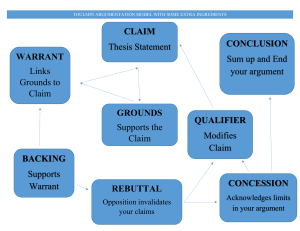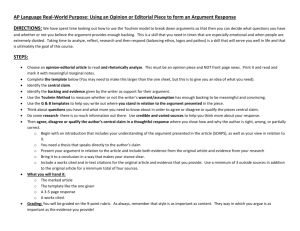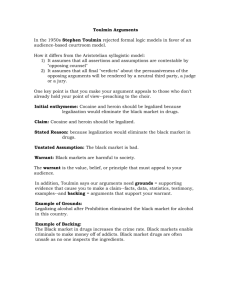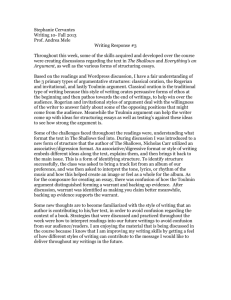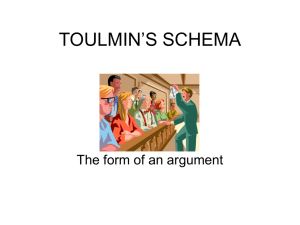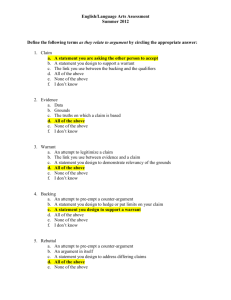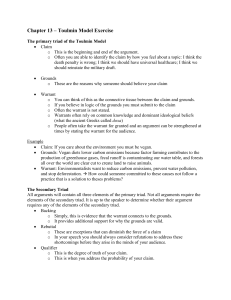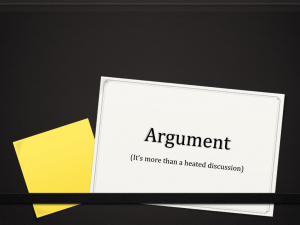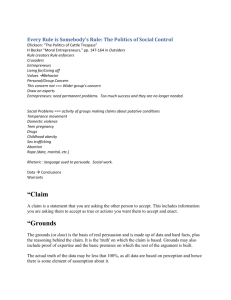For your timed writing:
advertisement
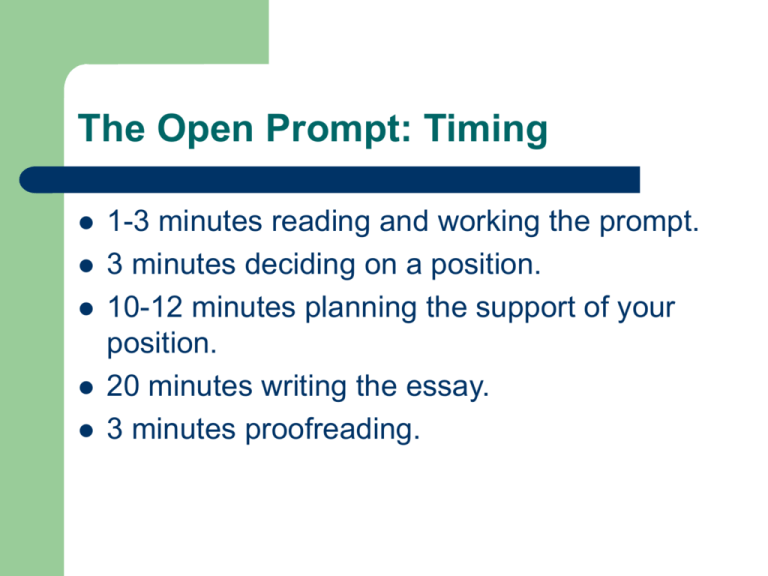
The Open Prompt: Timing 1-3 minutes reading and working the prompt. 3 minutes deciding on a position. 10-12 minutes planning the support of your position. 20 minutes writing the essay. 3 minutes proofreading. The 5 Canons of Rhetoric: Invention Kinds of Evidence Anecdotes Contrast and comparison Cause and effect Appeal to authority Facts/statistics Details Quotations Needed definitions Recognition of the opposition Examples Get out your “Pick a pair of words…” prompt Go through the prompt again, and start categorizing/adding to your evidence – – What seems worthwhile/worth developing for your essay? What can you throw out? The 5 Canons of Rhetoric: Arrangement Two types that we’re going to focus on: – Toulmin Argument – Rogerian Argument Today we’ll talk about Toulmin Using this method requires using a logical structure, but not just to prove a point… – You want to convince the reader of the validity of your argument, and the claims you’ve presented. The Toulmin Argument: the “traditional” one Make a claim Provide grounds for your claim Explore the warrant for the claim Provide backing for the warrant Explore the rebuttal to the claim End with a concession Make a claim You first must choose a topic and then form your opinion. – – – – This info is written in one sentence (like an assertion). Ex. “Standardized tests are biased against female and minority students A “because clause” can be added to the claim as a reason. There may be more than one claim! Provide grounds for your claim Evidence in the form of facts, data, or any info that supports the claim. – – To be credible, a claim needs specific evidence. You’re answering the questions, “How do you know?/What is that based on?” with your grounds. Explore the warrant for the claim A warrant is the unstated assumption underlying a claim, which should be a value, principle, or belief that the audience agrees with. – – Enthymeme! Warrants connect the claim and the support: come from personal experiences and observations. Provide backing for the warrant Support for the warrant that answers the question, “Why do you believe that?” – Depending on your audience this backing should include: Emotional appeals Quotations from famous people or recognized experts Statements based on the author’s personal credibility. Explore the rebuttal to the claim Acknowledging the limitations – – Hey, this might not always be true…but! Qualifiers: generally adverbs that modify a key noun; some common ones are typically usually, some, several… – Use these sparingly, but appropriately. Don’t simply state it! You must rebut the rebuttal!! Discredits the opposition if you acknowledge, and then shut it down. End with a concession A key point to this type of argument – – Brings the opposing sides together by acknowledging a part of the opposing argument that you cannot refute. Conceding that the opposition is valid, and then building on it to further your own claim creates warm and fuzzies, but you stand strong!
